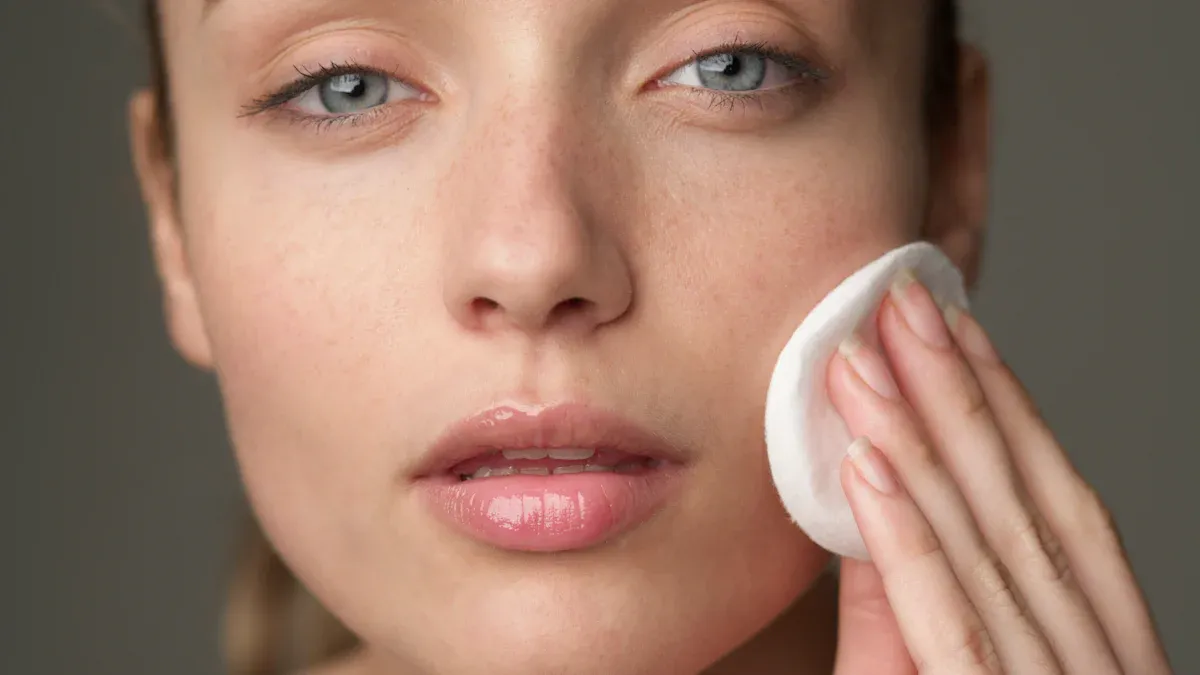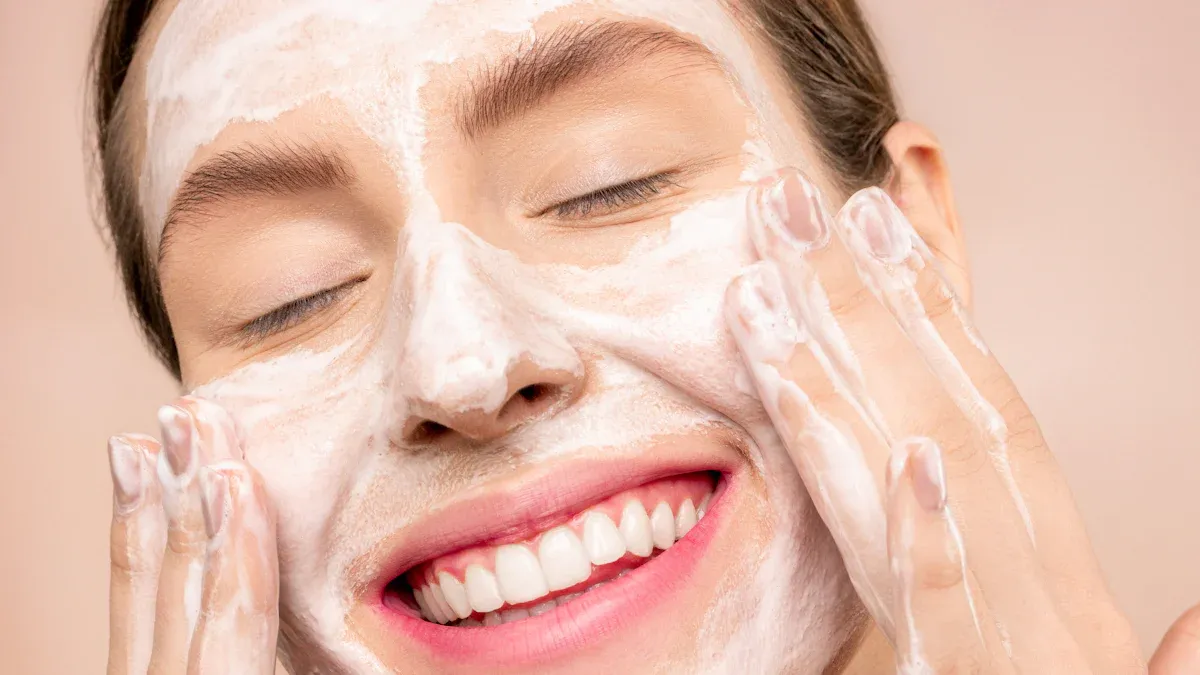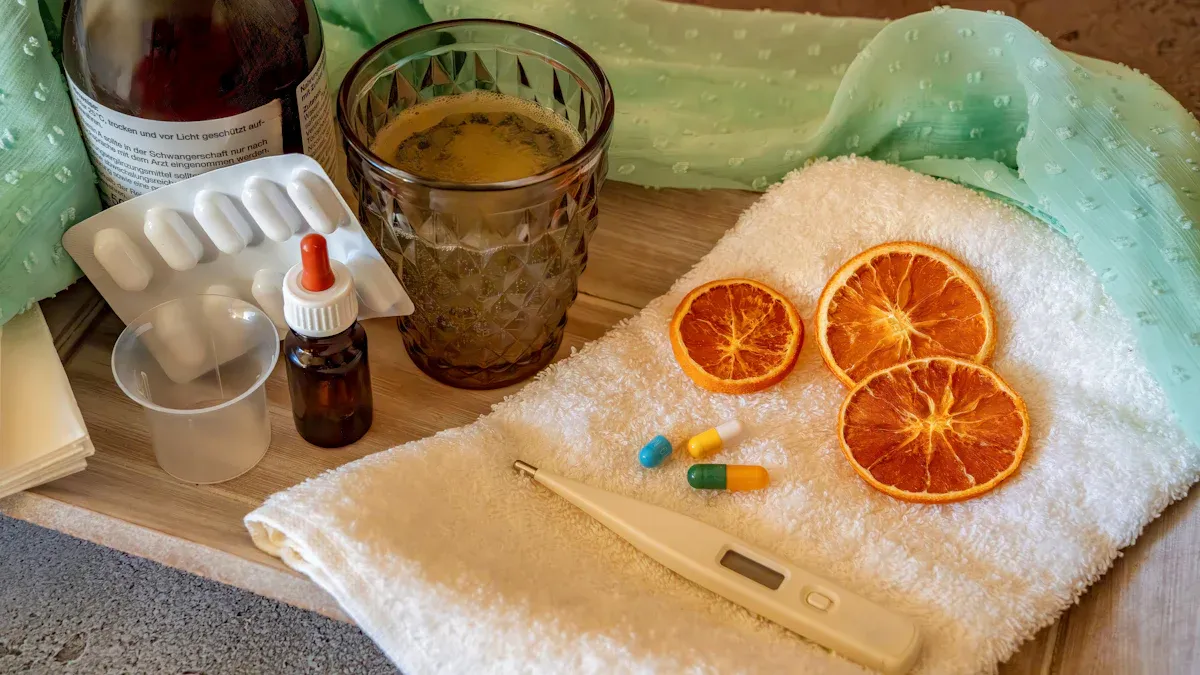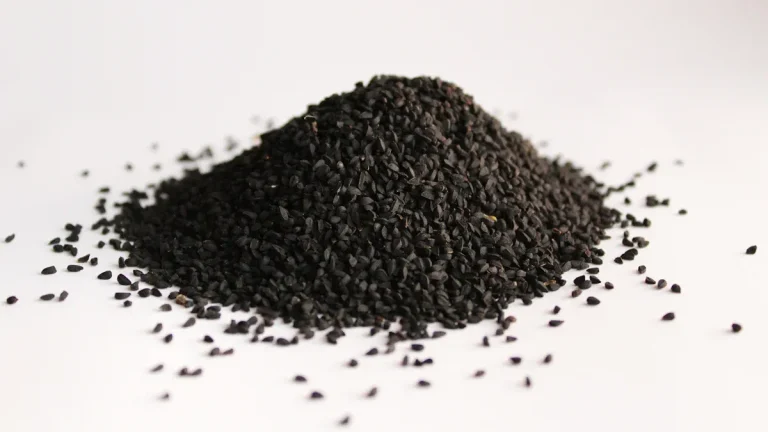
Cherry angioma removal is a common consideration for those who notice small, red or purple growths on their skin. You might see these growths more frequently as you age, particularly after turning 30. In fact, about 50% of adults will develop these benign marks at some point in their lives. While they’re generally harmless, understanding their nature and how to care for them, including options for cherry angioma removal, is essential for your skin health.
Key Takeaways
Cherry angiomas are common skin growths that often appear after age 30. Understanding their nature helps in managing skin health.
Professional removal methods, such as laser therapy and electrosurgery, are safe and effective options for treating cherry angiomas.
Regular checkups with a dermatologist are crucial for monitoring skin changes and ensuring overall skin health.
Cherry Angiomas Overview

Cherry angiomas are small, benign skin growths that can appear as red or purple spots on your skin. They often develop as you age, especially after the age of 30. While they are harmless, many people choose to have them removed for cosmetic reasons.
Characteristics
Cherry angiomas have distinct physical features that make them easy to identify. Here’s a quick overview of their characteristics:
Characteristic | Description |
|---|---|
Size | 2 mm to 4 mm |
Color | Light to dark red |
Shape | Round |
Appearance | Small, pinhead-like lesions |
These skin growths can also vary in size and color. Some may appear as small dots, while others can grow larger. They typically have a bright cherry red or purple hue and can be smooth or raised, often forming dome-shaped clusters.
Common Locations
You might notice cherry angiomas appearing on various parts of your body. They can develop almost anywhere, but they are most frequently found on the trunk. Other common locations include:
Arms
Legs
Neck
Scalp
If you spot a cherry angioma, remember that they are generally harmless. However, if you notice any changes in size, shape, or color, it’s a good idea to consult a healthcare professional.
Causes of Cherry Angiomas
Cherry angiomas can develop due to various factors, and understanding these causes can help you manage your skin health better. Let’s explore the main contributors to the formation of these skin growths.
Genetic Factors
Genetics play a significant role in the development of cherry angiomas. If you have family members with these skin growths, you might be more likely to develop them yourself. Research shows that certain genetic markers are linked to cherry angiomas. For instance:
Somatic mutations in the GNAQ and GNA11 genes are often found in many cherry angiomas.
A reduction in the level of microRNA 424 may lead to increased protein expression of growth factors, contributing to the growth of these angiomas.
If you notice cherry angiomas appearing on your skin, it might be worth considering your family history.
Environmental Influences
Your environment can also impact the likelihood of developing cherry angiomas. Here are some environmental factors to keep in mind:
Exposure to toxic substances can increase your risk of developing cherry angiomas.
Certain medications have been associated with these skin growths.
Immunosuppression, whether due to medical conditions or treatments, may contribute to their formation.
Additionally, protecting your skin from sun exposure is crucial. Dermatologist Michael I Jacobs notes that excessive sun exposure can worsen existing cherry angiomas or lead to the appearance of new ones. So, make sure to apply sunscreen regularly!
Age and Hormonal Changes
Age is another significant factor in the development of cherry angiomas. You’re more likely to notice these skin growths as you get older. In fact, studies show that:
Cherry angiomas are notably more common in adults over 30 years old.
Over 75% of individuals over 75 years old are affected by these skin growths.
Hormonal changes can also play a role. Dr. Chi explains that these mole-like skin growths form when estrogen attacks peripheral blood vessels, causing an aneurysm. This suggests that hormones may be a major factor in their formation. Here are some key points regarding hormonal influences:
Hormonal changes during pregnancy or when taking oral contraceptives can increase the likelihood of cherry angiomas.
The incidence of cherry angiomas rises significantly with age, particularly during periods of hormonal fluctuation.
Understanding these causes can help you take proactive steps in managing your skin health and recognizing when to seek professional advice.
Cherry Angioma Removal Methods
When it comes to cherry angioma removal, you have several professional treatment options available. Each method has its own benefits and effectiveness, so it’s essential to understand what works best for you.
Professional Treatments
Professional treatments for cherry angiomas are generally safe and effective. Here’s a quick overview of some common methods:
Treatment Method | Description |
|---|---|
Electrocautery | Uses electric current to burn off the angioma, typically under local anesthesia. |
Cryosurgery | Involves applying liquid nitrogen to freeze the angioma, leading to its eventual fall-off. |
Laser Therapy | A modern approach using a focused light beam to heat and destroy the angioma with minimal discomfort. |
Cherry Angioma Removal Pen | A convenient at-home tool that carbonizes the angioma using a high-frequency electrical arc. |
These methods are effective, but the choice depends on factors like the size and location of the angioma, as well as your personal preferences.
Freezing and Electrosurgery
Freezing and electrosurgery are two popular methods for cherry angioma removal.
Electrosurgery is often more effective than cryotherapy for cherry angiomas. It uses heat to destroy the growth, and many patients find it quick and relatively painless.
Cryotherapy, on the other hand, involves freezing the angioma with liquid nitrogen. While it can be effective, it’s noted to be more suitable for other skin conditions like seborrheic keratosis.
Both methods have their pros and cons, but they generally yield good results.
Laser Treatments
Laser therapy is another option for cherry angioma removal. This method uses focused light to target and destroy the angioma. It’s generally safe, with side effects being uncommon and typically mild. You might experience:
Temporary redness
Swelling
Bruising
These side effects usually resolve quickly with proper care. However, keep in mind that side effects such as bruising, swelling, or inflammation may occur and can last up to 48 hours after treatment.
While professional treatments are effective, you might be tempted to try home remedies. However, attempting to remove a cherry angioma at home can be risky.
Doctors do not recommend that people attempt to remove a cherry angioma at home for a number of reasons. Firstly, a doctor needs to confirm that the skin growth is a cherry angioma and not a lesion that needs a more careful look. Secondly, attempting to shave, cut, burn, or freeze a cherry angioma can be very painful and lead to infection or more significant scarring if done by an amateur.
Home Care Tips for Cherry Angiomas

Taking care of cherry angiomas at home can help you manage them effectively. Here are some safe practices to keep in mind:
Safe Practices
To protect your skin and manage cherry angiomas, consider the following recommendations:
Recommendation | Description |
|---|---|
Wear gloves during housework and gardening | Protects skin from chemicals and sunlight that may irritate cherry angiomas. |
Avoid scented products | Reduces the risk of skin irritation. |
Regular checkups with a dermatologist | Important for monitoring skin health, especially as the risk of skin cancer increases with age. |
While it might be tempting to try over-the-counter treatments, be cautious. Attempting to remove or treat cherry angiomas with these products can lead to scarring, infection, or other complications. There’s no scientific evidence supporting the effectiveness of topical treatments or home remedies for cherry angiomas. The safest and most effective way to treat them is under the care of a medical professional.
When to Seek Help
You should consult a healthcare provider if you notice any of the following signs:
Sudden onset of numerous petechiae.
Cherry angiomas that bleed frequently or change in size or color.
Accompanying symptoms like fever, malaise, or unexplained bruising.
Additionally, if you see a purpuric halo surrounding an angioma, it could indicate a serious condition. Always contact your provider if the appearance of a cherry angioma changes. Remember, while cherry angiomas are usually harmless, staying vigilant about your skin health is essential.
In summary, cherry angiomas are common and usually harmless skin growths. Here are some key takeaways:
They often appear as you age, especially after 30.
Professional removal methods, like laser therapy, offer safe and effective solutions.
Always consult a dermatologist if you notice changes in your skin.
Taking care of your skin is essential, so stay informed and proactive! 🌟
FAQ
What are cherry angiomas?
Cherry angiomas are small, benign growths on your skin that appear red or purple. They often develop as you age.
Are cherry angiomas harmful?
No, cherry angiomas are usually harmless. However, monitor any changes in size, shape, or color and consult a doctor if needed.
How can I prevent cherry angiomas?
While you can’t fully prevent them, protecting your skin from sun exposure and avoiding harmful chemicals can help reduce their appearance. 🌞


